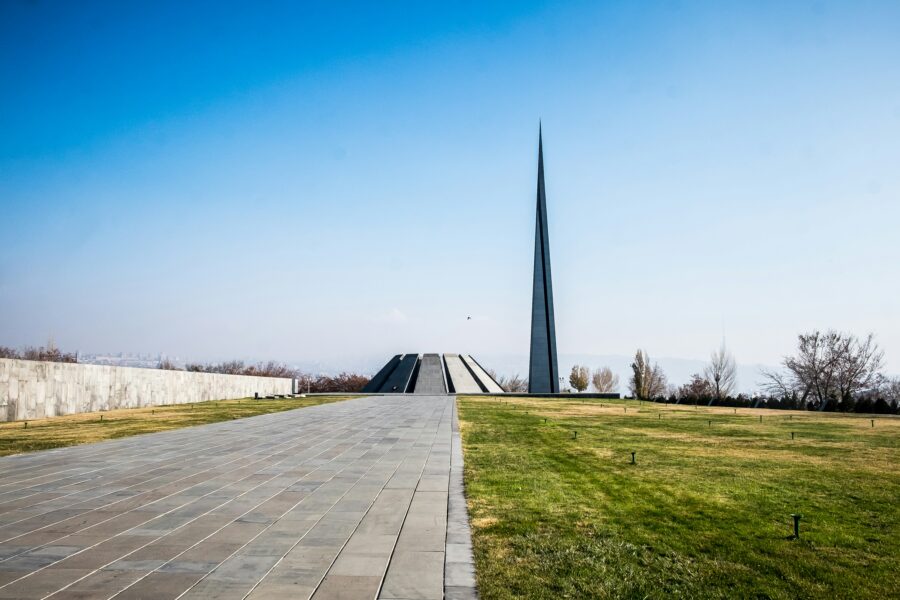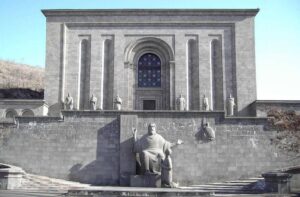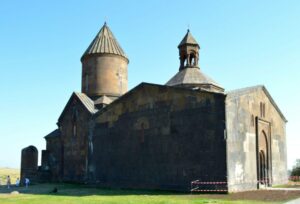Introduction: Tsitsernakaberd, the commanding memorial complex overlooking the city of Yerevan, transcends its physical presence to become a sanctuary of remembrance, paying homage to the resilience of the Armenian people in the wake of one of the 20th century’s most heinous crimes—the Armenian Genocide. Designed to commemorate the 1.5 million lives lost during this tragic chapter in history, Tsitsernakaberd is not merely a structure; it is a testament to the indomitable spirit of a nation.
Historical Significance: The genesis of Tsitsernakaberd dates back to April 24, 1968, when Armenia marked the 53rd anniversary of the genocide with the inauguration of this monumental complex. Architects Arthur Tarkhanyan and Sashur Kalashyan crafted a design that transcends time, marrying architectural prowess with profound symbolism, offering visitors a visceral connection to the nation’s history.
Architectural Symbolism: At the heart of Tsitsernakaberd stands a majestic, 44-meter tall stele, soaring into the sky as a beacon of remembrance. The needle-like structure symbolizes the endurance of the Armenian people, rising above the darkest depths of tragedy. Its sleek design encapsulates the paradox of pain and hope, a visual metaphor for the nation’s journey from despair to resurgence.
The Circular Wall of Names: Surrounding the central stele is a circular wall adorned with meticulously engraved names—a collective elegy for the towns and villages that bore witness to the atrocities. The 12 slabs of stone, representing the lost provinces of historic Western Armenia, amplify the magnitude of the genocide. Visitors traverse this solemn path, each step a contemplative acknowledgment of lives erased.
Eternal Flame: A perpetual flame flickers at the heart of Tsitsernakaberd, illuminating the eternal memory of those who perished. More than a symbolic gesture, the flame embodies the commitment to remembrance and serves as a solemn reminder that the echo of the past reverberates in the collective consciousness of the Armenian people.
Armenian Genocide Museum-Institute: Adjacent to the memorial, the Armenian Genocide Museum-Institute delves into the historical narrative with meticulous detail. Exhibits span archival documents, personal testimonies, and haunting artifacts, guiding visitors through the harrowing chronicles of the genocide. The museum serves not only as a repository of history but as an educational bastion fostering awareness and prevention of future atrocities.
Cultural and Commemorative Practices: Tsitsernakaberd has evolved into a cultural epicenter, hosting annual ceremonies on April 24th to mark the Armenian Genocide Remembrance Day. The memorial has become a pilgrimage site, drawing Armenians and global visitors alike, creating a shared space for mourning, reflection, and an unwavering commitment to justice.
Conclusion: Tsitsernakaberd, with its profound architectural symbolism, meticulously engraved names, eternal flame, and accompanying museum, stands as a living testament to the resilience and determination of the Armenian people. Beyond a memorial, it is a sacred space where the past is not consigned to history books but eternally etched into the collective memory of a nation. Tsitsernakaberd beckons all who visit to bear witness to the enduring spirit of a people who, in the face of unfathomable adversity, have risen, rebuilt, and triumphed over tragedy.



